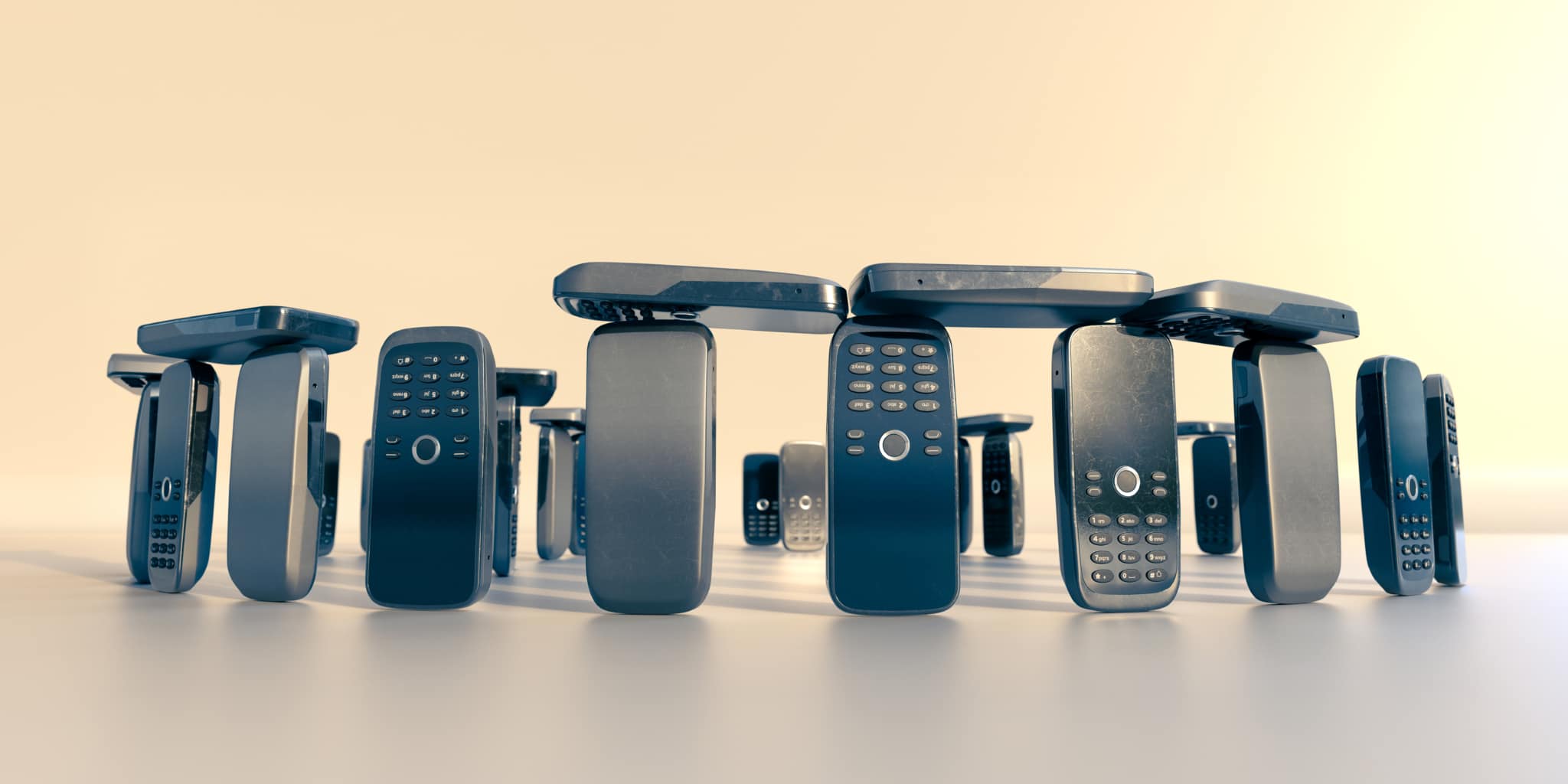International Phone Numbers: A Must in Global Businesses

In the modern marketplace, the world is much smaller than it used to be. Ecommerce businesses are often accessed from every corner of the globe, from Australia and Thailand to Kazakhstan and Ukraine. The United Kingdom has the most advanced ecommerce market in Europe, though, with 2019 revenue coming to a staggering 693 billion GBP.
What that global market means to you in real terms is that you need to have the ability to stay connected with your customers, often on a 24/7 basis, to recognise that they are in different time zones.
While customers in countries such as Ireland, Croatia, Lithuania and Spain may be on the same (or similar) time to you, customers as far away as Singapore, Nigeria, the Falkland Islands and Laos will be on very different schedules.
Being able to keep in touch with these customers is not just a question of time, it’s also about ease of access. Having an international telephone number is essential if you want to compete globally.
Just what is an international phone number? Are there different types, and how do you integrate them into your daily operations? Read on to find out.
What is an International Phone Number?
An international phone number is a reliable way for people anywhere around the world to contact you directly, no matter what the dialing protocols are in the country where they live. From relatively nearby nations like Russia and Georgia, to further flung territories like Paraguay or Principe.
It gives your business the consistency of one number which may be charged at local rates or may even be a freephone number.
Ways to Use International Phone Numbers in Global Business

Automate Business Call Management
International numbers for a business go hand-in-hand with an automated call management system to manage the increased flow of calls to your dedicated number(s). An automated system ensures you don’t miss a single call, whether that call comes from Canada, South Africa, or Bolivia.
Set the Right Time Zones
So you’re in the UK, but you may have customers In Iran, Japan, Zimbabwe, or Vietnam, and all those countries are in a different time zone. A business phone system with an international number helps with this by using IVR (interactive voice response) to direct calls to agents assigned to those particular time zones. This means you are offering 24/7 availability to customers from Uganda to South Korea.
Use Voicemails
Even with 24/7 coverage and an automated system, some calls may go unanswered (during particularly busy periods, when agents are on holiday, etc.). IVR can deal with these calls by directing the caller to voicemail so they can leave a message. However, you must ensure that voicemails are well organised and dealt with promptly by the appropriate agent or team.
Make “Call Only Ads”
Converting leads on a phone call is a lot easier than converting via a written message or email. That means you want to direct more potential customers towards calling you than other forms of communication if you can. So, once you have set up virtual numbers for each country you target, from Indonesia to Colombia, you should create “Call Only” ads for those locations.
Make Your Callers Feel Special
Of course, one big challenge of dealing with global customers is language. A customer from Cambodia speaks Khmer, a customer from Pakistan will speak Urdu, and so on. While you may not have agents who speak every language, you can use IVR to greet callers with a message in their native language before passing them to an agent.
Benefits of International Phone Numbers

Features & functions
- Centralise and streamline your system. By using an international phone number, you bring your global customer service and sales system into one repository. That means you’re collecting and analysing information from every country you deal with, from Armenia to Azerbaijan. This can help you see a 360° view of every lead, customer service query, and what calls are resolved in real time.
- Localisation. You can choose a number that seems specific to a region’s area code or country code. So, if your customers are in Brunei or Guinea-Bissau, you can buy a number that has the prefix applicable to that country. Using those prefixes makes it look like you’re located close to them, which will make your business more appealing.
- Professionalism. Using a virtual international number makes your business appear more professional. It shows that you value customer service and contact, and can increase your profitability. It can also help enhance your brand as one people can trust.
- Flexibility. An old fashioned landline is limited in its use. If you switch to a VoIP system with international numbers, you add lots more flexibility, including call attendants, call forwarding, call routing, video conferencing, and other features. This makes it easier for customers to get in touch whether they are in Tanzania or the Virgin Islands.
- Quality. With old PBX systems, quality was hit and miss. That could lead to missed information on either end of the call. With VoIP systems coupled with an international number, you have clarity on every call which means you have quality exchanges of information.
- Insights and analysis. By using international numbers with an automated system, you make it easier to collect all the relevant data that comes from all your communications channels including email, social media, and others. This gives you better insights into your campaigns and strategies.
Availability
- Getting a local landline number can be complicated. If you want to buy an international number, the process is easy and quick. You just need to choose your virtual phone service, set up the app, then choose the numbers for any countries you want, with the specific country calling code needed for each international call.
- Combining international numbers with an efficient call management system means you offer 24/7 availability to each and every customer. It doesn’t matter whether they are located in El Salvador or Burundi, they have easy access to your agents.
Cost

- Lower costs for callers. With the old way of doing things, customers had to use International direct dialing (IDD) or international subscriber dialling (ISD), both of which could incur hefty charges. With international numbers, they only pay their local call rates (or toll free if you have chosen that) no matter which country they’re in.
- Lower costs for you. If you used to make outgoing ISD calls to countries as far away as Fiji or Afghanistan, then you know the costs those calls incurred. Now you can make those calls from your virtual phone system and pay local rates.
ITFS Vs. UIFN
ITFS is the International Toll Free Service. It’s the international equivalent of toll free numbers in the USA. UIFN stands for Universal International Freephone Number and allows your business to advertise a single number that can be accessed from multiple countries. So, how do they differ?
How They’re Used
Making a choice can very much depend on the coverage you want. For example, if you only want to offer toll free access in a small number of countries, then ITFS is the best choice. It also works well if you can add a drop down menu on your site listing different countries and their specific toll free numbers.
UIFN is better if you operate in multiple countries or if you want to use one number for a specific marketing campaign whether the leads are in the Bahamas or Bahrain, Macedonia or Moldova.
Some good examples of using UIFN include as a support line for large data centres, for a university with remote campuses in different countries, or for research companies conducting research internationally.
Costs
With UIFN, you pay a one-off fee to the ITU (International Telecommunication Union) of around $200-300. You also need to pay an annual maintenance fee as well as a monthly subscription fee for each country you add to your UIFN coverage. With ITFS, it is the carrier who pays the registration fee to the ITU. This means that in some scenarios, ITFS can be the cheaper option.
Coverage

Using UIFN can be complicated. To dial a UIFN number, the caller has to dial the country’s IAC (international access code), also known as the international country code. So, a UIFN number includes that IAC, the 800 prefix, and then a further eight digits. There is also the added hurdle of some countries imposing restrictions on UIFN that you do not get with ITFS.
The ITU is the regulatory body for UIFN. If a country is not a member of the UIFN program, then they cannot access those numbers. To compare the two, you should note that only around 50 countries are in the UIFN program while ITFS is available in more than 140 countries.
Some of the countries that are in the UIFN program include:
- Argentina
- Czech Rep
- Luxembourg
- Austria
- Finland
- Malaysia
- Belarus
- France
- Netherlands
- Belgium
- Germany
- New Zealand
- Brazil
- Hong Kong
- Norway
Support per Country
Some countries have restrictions on how you can access either service. For example:
In New Zealand, a caller can dial ITFS from any mobile phone network but UIFN numbers can only be accessed from two networks (Vodafone and Telecom New Zealand).
In the Netherlands, there is no legal requirement to provide access to UIFN numbers so some phone providers do not offer it.
In Taiwan, hotels are required by law to allow guests to dial ITFS numbers but they are not required to provide UIFN access.
How to Format International Phone Numbers
If you are formatting a number in a non-NANP country (North American Numbering Plan), you need to include both area and country codes.
Separate the different sets of numbers with spaces and add a plus sign “+” before the country code with no space. This is a three digit code. For example, the country code for the Democratic Republic of the Congo would be +243.
Wrapping Up

If you’re looking to grow your online business, you want to reach every possible customer in multiple countries. You may have potential customers sitting in countries as diverse as the Central African Republic, the Philippines, Estonia, or Malta. Making it easier, and cheaper, for them to communicate with you means there’s more likelihood of potential becoming actual.
If you want your organisation to have true global reach while saving your and your customers’ costs, then an international phone number is a necessity.
Originally published Jan 31, 2022

